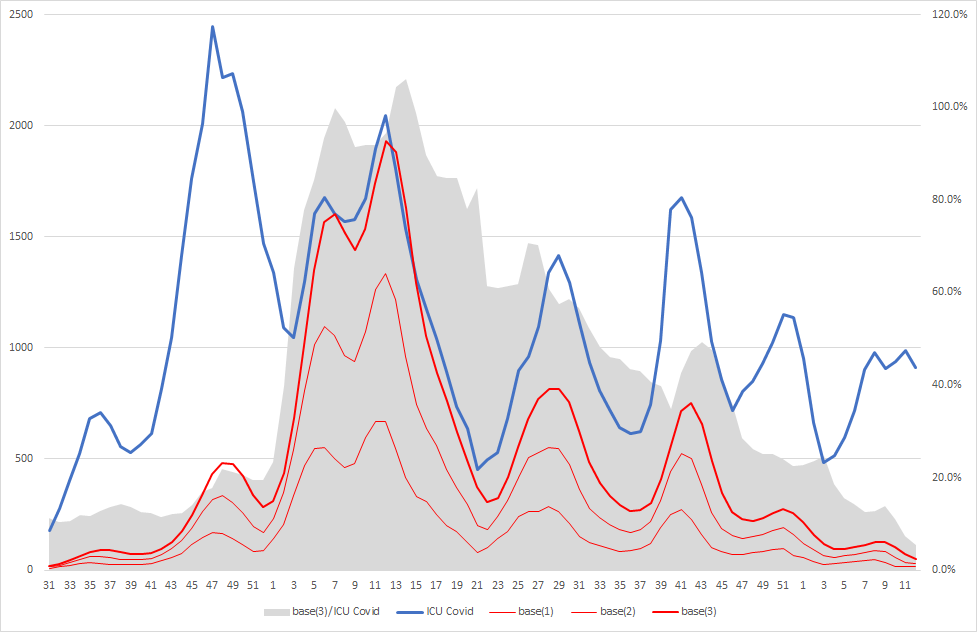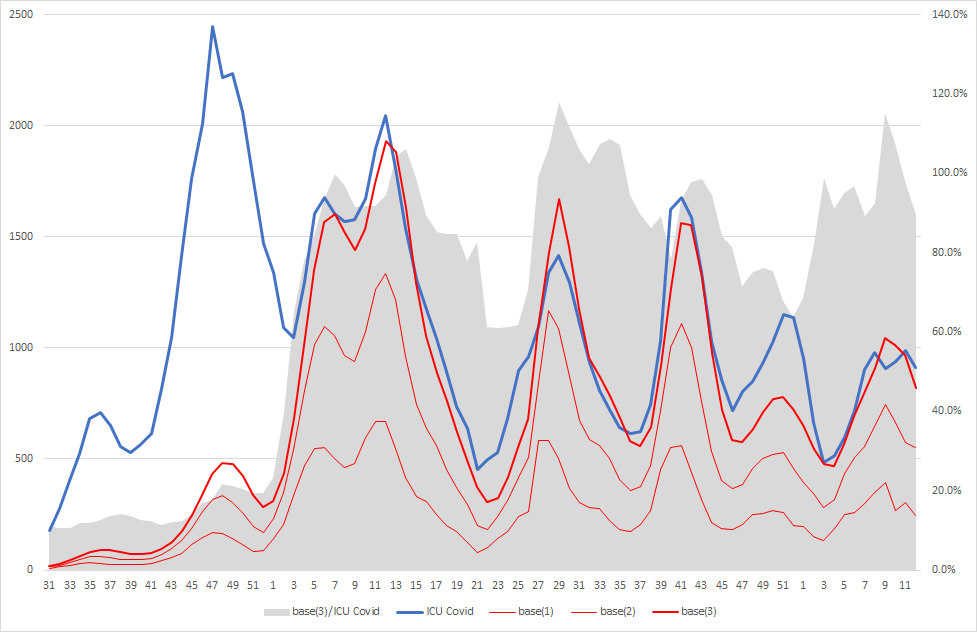Two months ago, I wondered about the fact that Covid deaths and Covid-related ICU occupancy in Germany could less and less be explained by a baseline constructed from official case rates. There were two possible explanations: Covid might have become more dangerous during 2022 and 2023, or there might be serious underreporting of cases.
That case can be settled now. The Robert-Koch-Institut (RKI) has come up with a report describing results from an extension of GrippeWeb, a voluntary reporting system on influenza-like illnesses in Germany. Here comes diagram no. 6 from the report, which I amended by a grid, in order to be able to read off values with reasonable accuracy (unfortunately, I have no access to the underlying data). Results are shown by calendar week, starting from week 27 of 2022.
The case rates reported by the volunteers (solid black graph = rate for the whole population) are vastly higher than the official figures (dashed black graph = rate for the whole population, taken from here). For example, in calendar week 45 of 2022, the ratio has been around 0.55 / 0.25 = 2.2.
The diagram on Covid deaths, as in my previous post but updated with recent data, looks like this:
Supplanting the official case rates by the GrippeWeb ones, we get:
Amazingly, with the “new” case rates, the baseline is retaining the explanatory power it had at the beginning of 2022. And things are looking even better (statistically speaking) for ICU occupancy. Here comes the diagram based on official case rates:
And with GrippeWeb case rates:
So, Covid has not become more dangerous during 2022 and 2023. The official case rates have simply become useless. Moreover, the fact that the baseline can explain so much of ICU occupancy shows that many people are on ICU “with” and not “because of” Covid.
This is all the more amazing if we consider the fact that GrippeWeb is not a “true” cohort study but relies on voluntary participation. For example, Covid vaccination rates among participants are much higher than among the general population (around 95% vs. 85% for adults).
And talking about vaccination, the report shows that vaccination status barely influences Covid infection (diagram no. 5):
For all age groups, cumulative rates over time are almost the same for zero, two and three jabs. Only the four-times jabbed (darkest blue) seem to have done better so far. However, consider that most of those fourth shots (around 7 out of 12) have been dealt out during the time period on display (whereas rates for zero, two and three jabs barely changed). The authors of the report, of course, are cautious about statements that would let vaccination appear in a bad light. But even they are putting forward, as explanation of the fact that cumulative case rates for the double-jabbed are even higher than for the unjabbed, the idea that people were reluctant to get a third jab if they already had natural immunity from a previous infection. Let me turn this argument around: maybe the people who had had three jabs and were lucky not to have had Covid, ascribed this to the vaccines and were happy to take the next jab as well.
Anyway, it is good to have an additional data source. Please, RKI, do not let it run dry, even if it starts pushing over your narrative.









I'm hoping you can shed some light on the Alternative for Germany Party. Christine Anderson recently visited Canada (she's somewhat popular among a segment of the population here). How do Germans view the party? I see they have many factions from moderates to 'far right'. The left here characterizes her as a Nazi (which I don't think she is).
Haha I love the conclusion. I believe that is exactly what happened.